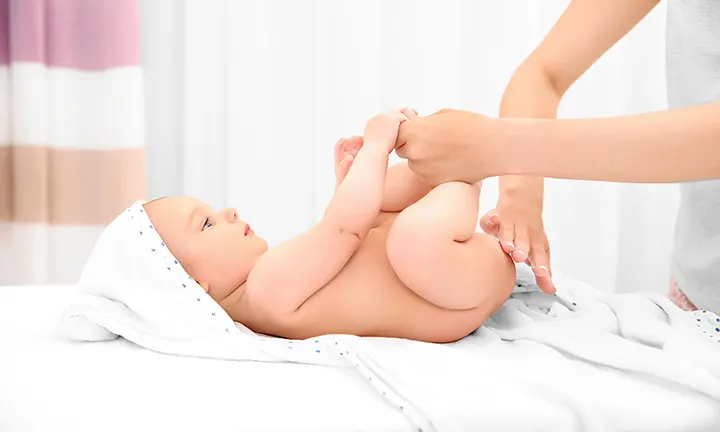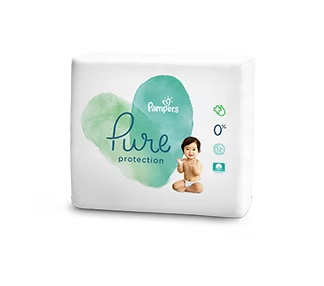When and How to Use Diaper Cream for Your Baby
If your little one has red, irritated skin in their diaper area, they may be experiencing diaper rash. The silver lining? Diaper rash cream can offer soothing relief and protect your baby’s sensitive skin. But when is the right time to use it? How do you apply it properly? And should you use it with every diaper change? This guide covers all the essentials of using diaper rash cream effectively.
Key Takeaways
When to use diaper cream? Apply it as soon as you first notice signs of diaper rash. It's not necessary to use it at every change—only when there's a rash.
How to apply diaper cream? Start by gently cleaning and drying the skin, then apply a generous layer of cream, ensuring all affected areas are covered.
Where to put diaper cream? Spread it over the irritated area, including creases and folds. Be cautious to avoid direct contact with sensitive areas in baby girls.
How often should diaper cream be used? Use it at every diaper change or several times a day when a rash is present, and discontinue use once the skin has healed.
It’s a good idea to check with your little one’s healthcare provider for guidance if your little one has diaper rash.
What Is Diaper Rash Cream for Babies?
Diaper rash cream is a topical ointment used to treat diaper dermatitis, commonly referred to as diaper rash. This condition occurs when a baby’s skin becomes irritated due to prolonged exposure to moisture, urine, and stool, resulting in redness and discomfort.
Diaper creams work by forming a protective barrier on your baby’s skin, shielding it from irritants and aiding in healing. Diaper creams that contain zinc oxide or petroleum jelly are often recommended for their protective qualities.
When to Start Using Diaper Cream?
It's best to start using diaper cream as soon as you notice the first signs of diaper rash. Diaper rash may show up as patches of redness and irritation in the diaper area. Note that these areas may be harder to see on darker skin tones. It might also appear as bumps or tiny spots of redness or discolouration.
Ever wondered if diaper cream is safe for your newborn? Newborns have sensitive skin, but using diaper cream occasionally is usually fine. Still, it's wise to check with your baby's doctor before trying new products.
Diaper cream should be used as a treatment for existing diaper rash rather than as a preventive measure.
If your baby’s diaper rash lingers after several days of home treatment, worsens, or you see blisters or open sores, reach out to your little one’s healthcare provider. They might prescribe an antifungal or antibiotic cream based on your baby’s rash.
How and Where to Apply Diaper Cream?
If you’re curious about where to put diaper cream and how to apply it effectively, follow these steps:
Step 1
Clean the area. Gently cleanse your baby's diaper area with baby wipes that are fragrance-free and alcohol-free, like Pampers Sensitive Baby Wipes, clinically proven to be gentle on your baby’s delicate skin. Make sure all traces of urine and stool are removed.
Step 2
Dry thoroughly. Gently pat the diaper area dry with a soft towel. Avoid rubbing, as this can cause further irritation. If you have time, you could give your baby’s diaper area some time to air dry before applying a cream and diaper.
Step 3
Apply the cream. Using clean hands, gently apply a thin layer of diaper cream to the affected area. You don’t need to rub it in, as this may irritate the area further. So, where is the best place to apply diaper rash cream on girls and boys? For girls, ensure the cream is applied to the vulva and surrounding areas, avoiding the vaginal opening. For boys, apply the cream to the penis, scrotum, and surrounding areas. Ensure all creases and folds are covered.
Step 4
Re-diaper. Allow the cream to absorb briefly before putting on a fresh diaper. Use a diaper that fits well to provide comfort and reduce friction and leaks that may lead to diaper rash. Consider Pampers Swaddlers for your baby, as they provide superior skin protection against the four main causes of diaper rash.
How Often to Use Diaper Cream
A common question from parents is, “Should I use diaper cream at every change?” If your little one has a diaper rash, then yes, diaper cream can be applied during each diaper change, or several times a day. This ensures continuous protection against irritants and aids in healing. If the diaper area is clean, you don’t need to remove the previous diaper cream; simply apply another layer on top.
Once your baby’s rash has resolved, you can stop using the diaper cream and focus on preventive measures.
Preventing Diaper Rash
While diaper cream is effective for treating diaper rash, prevention is key. To help prevent the four main causes of diaper rash—overhydration, prolonged contact with stool and urine, increased skin pH, and friction—consider the following practices:
By incorporating these practices into your diapering routine, you can help maintain your baby's skin health and reduce the likelihood of diaper rash.
FAQS AT A GLANCE
No, gently apply a thin layer of diaper cream to the affected area without rubbing it into the skin, as rubbing can cause further irritation.
The Bottom Line
Diaper rash can be uncomfortable for your baby, but using diaper cream correctly can provide quick relief and promote healing. Remember to apply diaper cream at the first sign of irritation, ensure your baby’s skin is clean and dry before application, and use it at every diaper change while the rash is present. It’s also advised to contact your little one’s healthcare provider for advice on diaper creams and recommendations if the diaper rash persists or worsens.
While we’re on the topic of creams and diapers, you could get rewards and discounts on your Pampers purchases. Start saving today by downloading the Pampers Club App !
How We Wrote This Article The information in this article is based on the expert advice found in trusted medical and government sources, such as the American Academy of Pediatrics and the American College of Obstetricians and Gynecologists. You can find a full list of sources used for this article below. The content on this page should not replace professional medical advice. Always consult medical professionals for full diagnosis and treatment.
Join Pampers Club and get:




